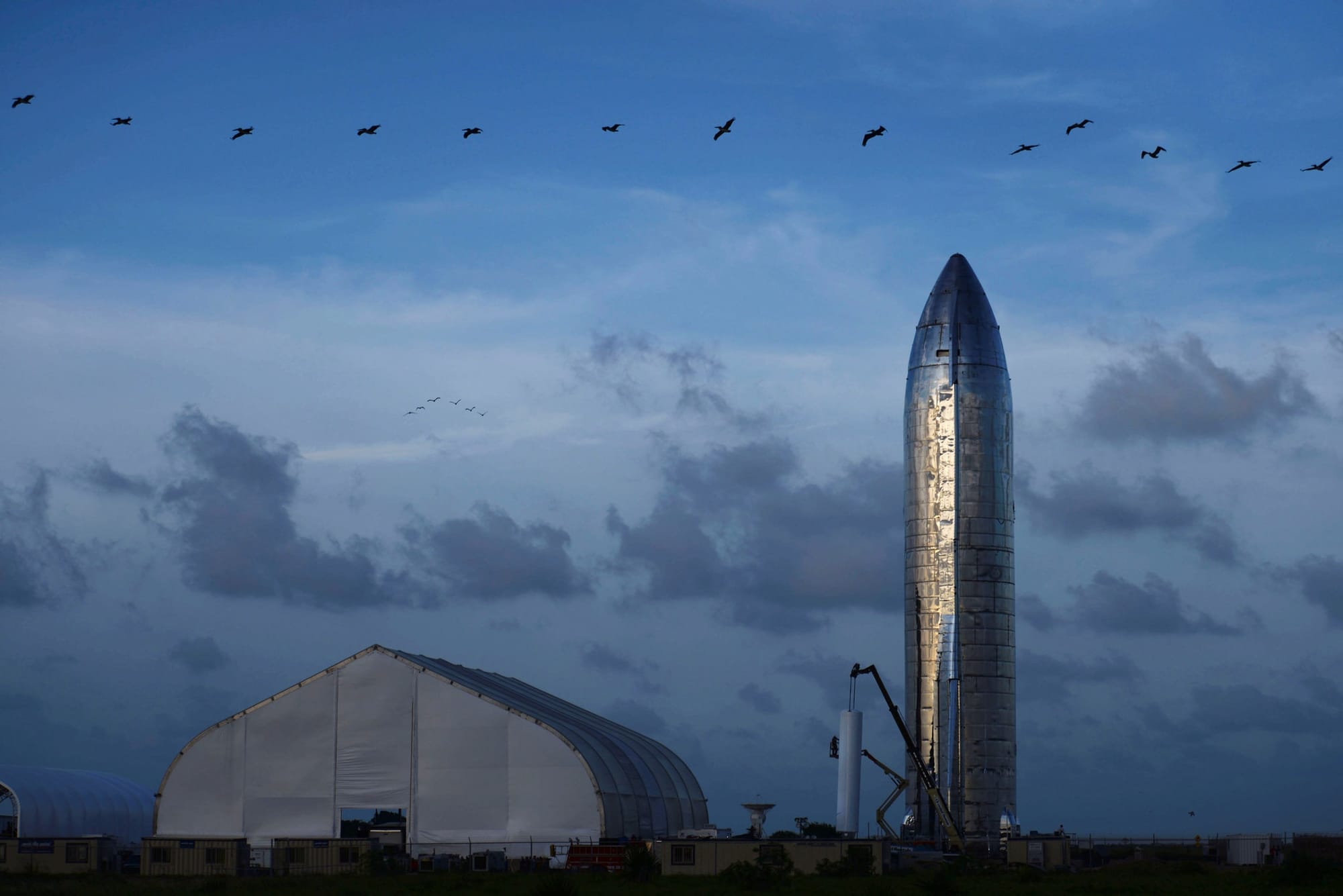SpaceX Unveils Silvery Vision to Mars

SpaceX CEO Elon Musk is talking up his Starship Mk1 prototype super-rocket in Texas, less than a week in advance of an eagerly awaited update on his plans for Starship trips to the moon, Mars and beyond.
During a live-streamed presentation that’s set for Saturday at the Boca Chica site, Musk is expected to discuss plans for testing and flying the Starship system over the next few years.
Within a month or two, he says optimistically, this prototype of the Starship spacecraft — without anyone aboard — will blast off to an altitude of 12 miles, then return to the ground in one piece.
“It’s going to be pretty epic to see that thing take off and come back,” Mr. Musk said late on Saturday at a SpaceX facility outside Brownsville, Tex., where Starship is being built.
The update on his mega-rocket was timed to coincide with the anniversary of SpaceX’s first successful launch 11 years ago. SpaceX has a steady business putting satellites in orbit and carrying cargo to the International Space Station. But whether the company can meet its founder’s aims of taking people to Mars is yet to be seen.
The company’s earliest rocket, Falcon 1, was just 68 feet high, 5.5 feet in diameter and could carry a payload of 400 pounds.
Japanese billionaire Yusaku Maezawa has already struck a deal with SpaceX to take a Starship flight around the moon by the mid-2020s and is reportedly planning to sell a multibillion-dollar stake in his fashion retail company to cover the cost.
Musk has said Starship (previously known as the BFR) could take on flights to Mars by the mid-2020s, plus crewed trips to the moon and supersonic point-to-point trips between destinations on Earth. He didn’t address those beyond-Earth visions in today’s tweets, but in a discussion with his followers, he did get into the nuts and bolts of Starship design — including what’s going to be packed inside the prototype’s nose cone, or fairing.
On Saturday, Mr. Musk responded that the “vast majority” of SpaceX’s resources are focused on its existing spacecraft, including Crew Dragon, and setting launch dates were up to NASA at this point.
“The NASA administrator was like ‘What’s going on? Are you not working on Crew Dragon or something?’ in that tweet,” Mr. Musk said during the post-event interview. “Actually, there’s nothing more we can do from a hardware standpoint. The hardware is basically done. It’s really just a whole bunch of NASA reviews, essentially. Speed up the NASA reviews, we can launch sooner.”
If Starship does start flying soon, and especially if it lands on the moon, that could amplify arguments that NASA could save money by buying rides to deep space from SpaceX rather than continuing development on its own Space Launch System rocket, the key component in plans to return NASA astronauts to the moon by 2024. S.L.S. could cost $1 billion per launch and plans are to fly it less than once a year.
3/10/2019



